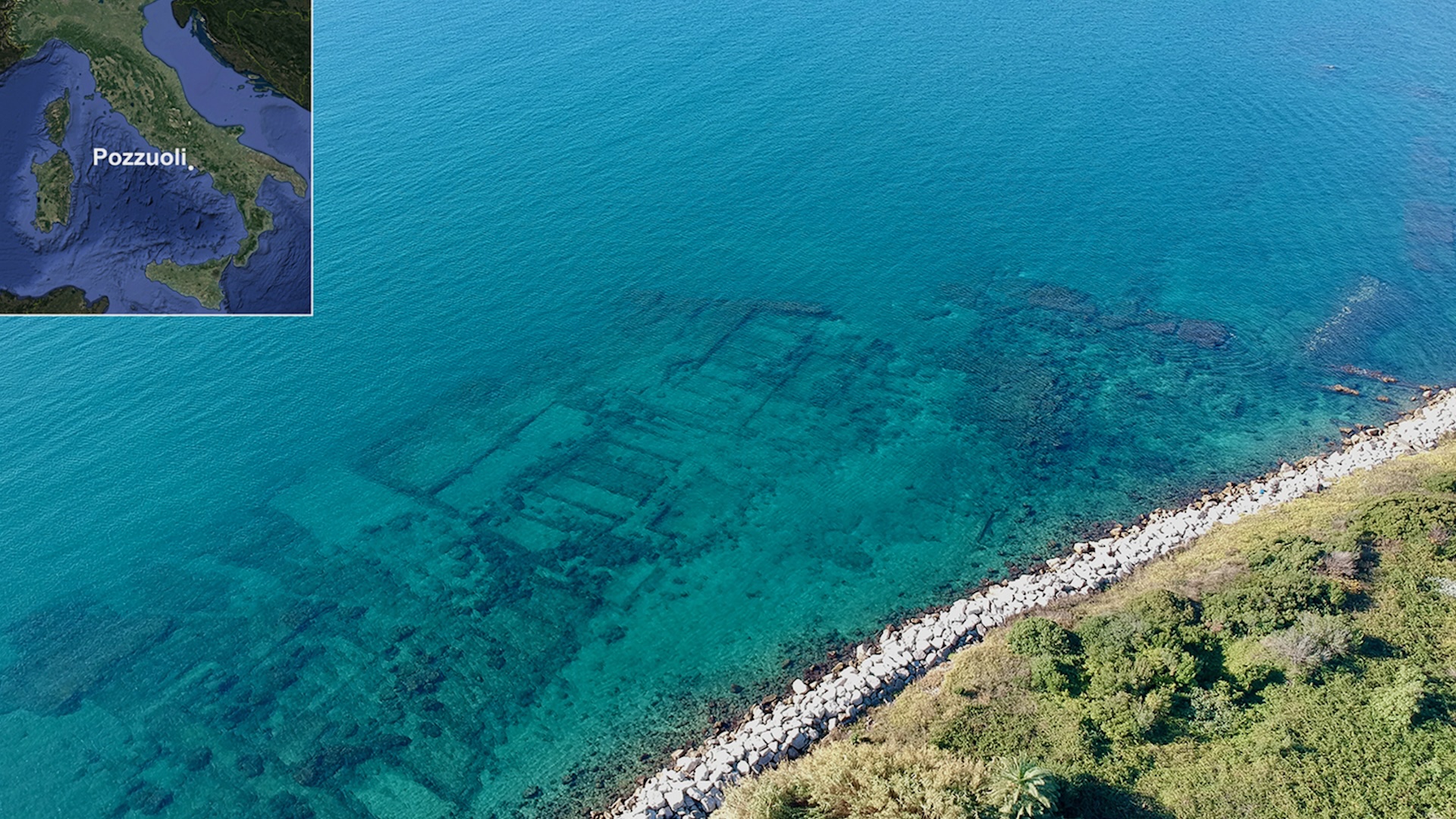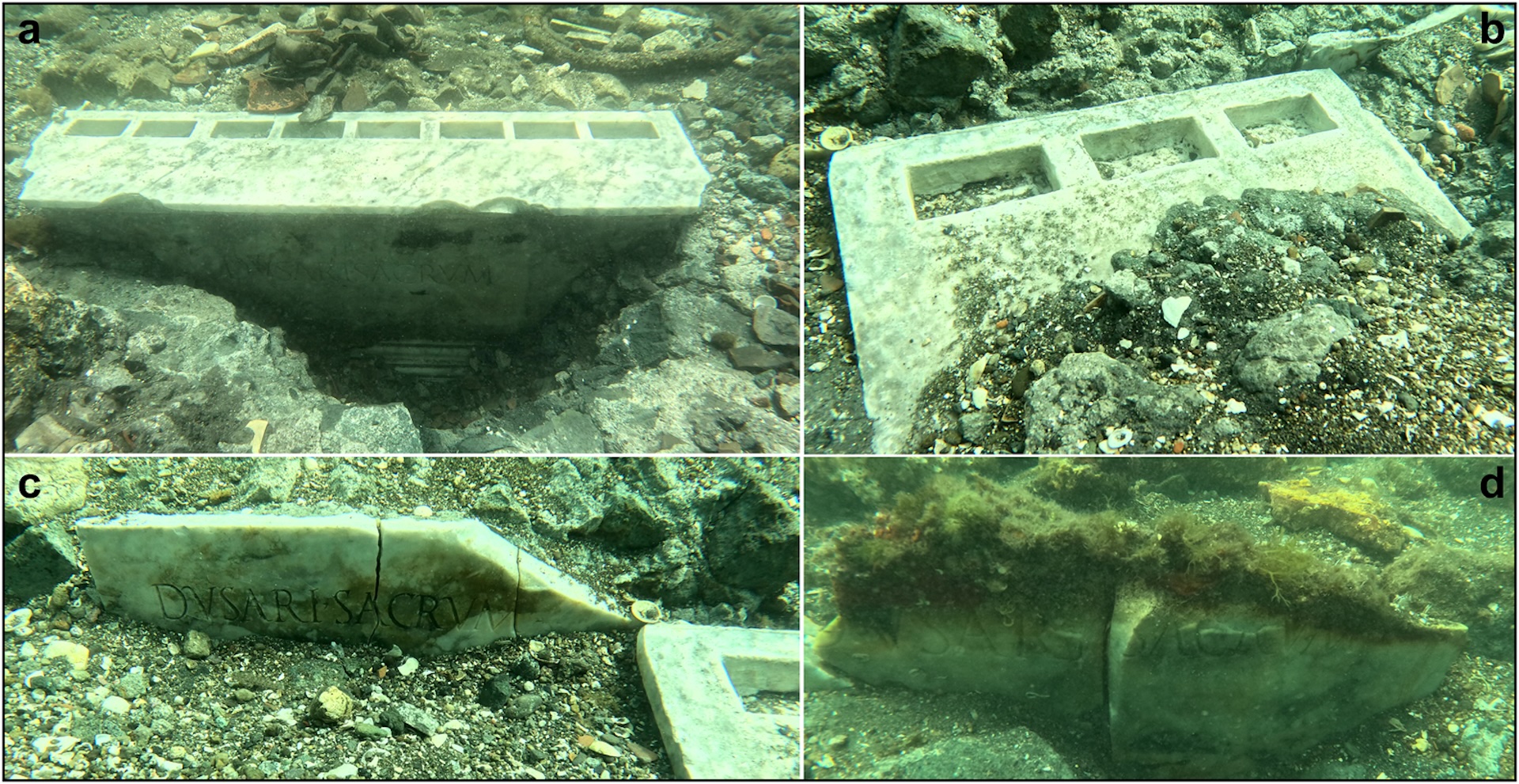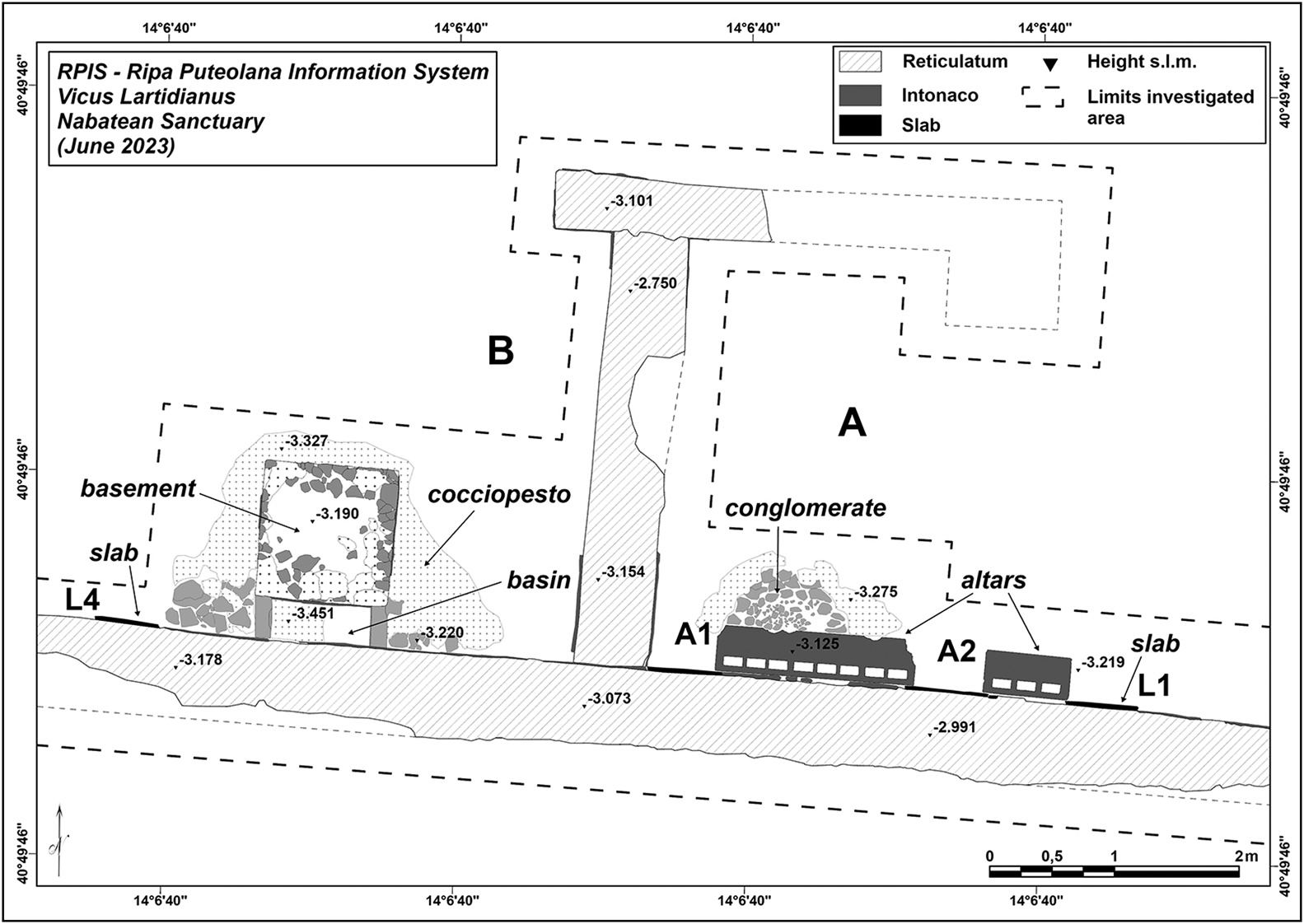
Archaeologists have discovered ancient altars and inscribed marble slabs submerged along the Italian coast near Naples. The finds are likely the remains of a 2,000-year-old temple built by immigrants from Nabataea, an ancient kingdom on the Arabian Peninsula whose rock-carved "Treasury" featured in "Indiana Jones and the Last Crusade."
However, the elaborate temple was later buried with a mix of concrete and broken pottery, possibly due to foreign traders leaving the area, according to a study published Sept. 12 in the journal Antiquity.
"For me this was one of the most unexpected discoveries," study first author Michele Stefanile, a maritime archaeologist at the Southern Graduate School (Scuola Superiore Meridionale), an education institute in Naples, told Live Science in an email.
The temple sits off the coast of Pozzuoli, a town in the volcanic Campi Flegrei, about 10 miles (16 kilometers) east of Naples. In Roman times, the city was known as Puteoli and was a large harbor where ships from all over the Roman world docked to bring in trade goods like grain.
Volcanic activity over the centuries has significantly changed the coastline at Pozzuoli, submerging and preserving around 1.2 miles (2 km) of Roman-era warehouses and other buildings associated with the ancient port district. Artifacts recovered from the sea as far back as the 18th century suggested that there was a buried temple, but no one knew exactly where.

In 2023, researchers mapping the region's seafloor discovered two submerged rooms with Roman-style walls. These walls, which measured about 32 feet by 16 feet (10 by 5 meters), made up two large rooms. Two altars of white marble were leaning against the wall of one room. Both altars included several rectangular recesses, which probably once housed sacred stones. Each of the rooms also contained a marble slab with the Latin inscription "Dusari sacrum," meaning "consecrated to Dushara," the main god in the ancient Nabataean religion.
"It seems that we have a building dedicated to the Nabataean gods, but with Roman architecture and Latin inscription," Stefanile said.
The Nabataean Kingdom reached from northern Arabia to the eastern Mediterranean. In the fourth to second centuries B.C., the Nabataeans controlled a growing trade network of luxury goods such as incense, gold, ivory and perfumes, accumulating huge wealth by the late first century A.D. The enormous tomb often called The Treasury at the Nabataean capital of Petra was built around that time.

"It makes perfect sense that the Nabataeans would be in Puteoli as a community of traders," Steven Tuck, a Roman historian at Miami University in Ohio who was not involved in the study, told Live Science in an email. Puteoli was the second-largest city and the main harbor of Roman Italy at the time, Tuck said, and the "Nabataeans would have been drawn there and brought their religious practices with them."
Laurent Tholbecq, an archaeologist at Université libre de Bruxelles, told Live Science in an email that "it is not surprising to find a temple to Dushara/Dusares, their main divinity," at Puteoli. "It is widely understood that the Nabataeans benefitted from the Roman advance in the Near East until the creation of the Arabian province under Trajan," a Roman emperor who ruled from A.D. 98 to 117, said Tholbecq, who was not involved in the study.
After Nabataea was annexed into the Roman Empire in A.D. 106, the culture's control over the inland caravan trade in Arabia collapsed. The destruction of the temple at Puteoli may reflect that turbulent time.
Stefanile and his team discovered that the temple was purposefully buried in the second century A.D. with a mix of concrete and broken pottery.
"Possibly after Trajan's conquest of Arabia in 106 A.D., the Nabataeans had no more possibility of free trading in Puteoli, and they possibly abandoned the harbor," Stefanile said.







